|
|
#921 |
|
⊙▃⊙
|
Daily Suspicious0bserver's Weather Post:
April 30, 2014 What's in the sky tonight? April 30, 2014 -Can you see the hairline Moon yet in the west in twilight? It's about a fist-width to the lower right of Aldebaran for North American skywatchers. Binoculars will help. How about the departing Pleiades? -When the sun set over Australia on April 29th, sky watchers noticed something odd. A piece of the sun was missing. The new Moon passed in front of the sun producing a partial eclipse as deep as 70%. This was the view from Adelaide, South Australia. "Here the eclipse peaked at 51% and was still in progress as the sun was setting," says photographer Martin Lewicki. "We could see it clearly through the clouds." Visibility of this eclipse was restricted to Australia and the coast of Antarctica. While Australians witnessed a partial eclipse, in Antarctica the Moon passed directly in front of the sun, producing a "ring of fire" annular eclipse. Photographs of that phase, however, might not be forthcoming because of the remote location.  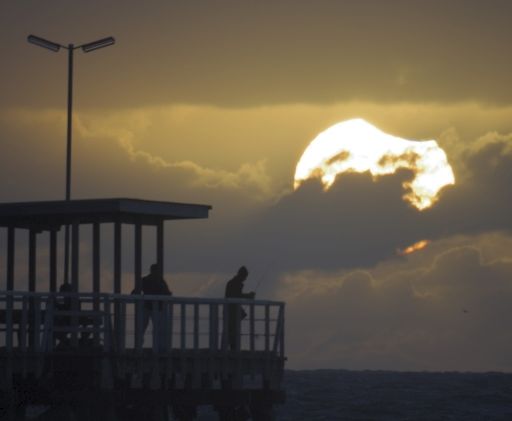 Astro Picture of the Day: April 30, 2014 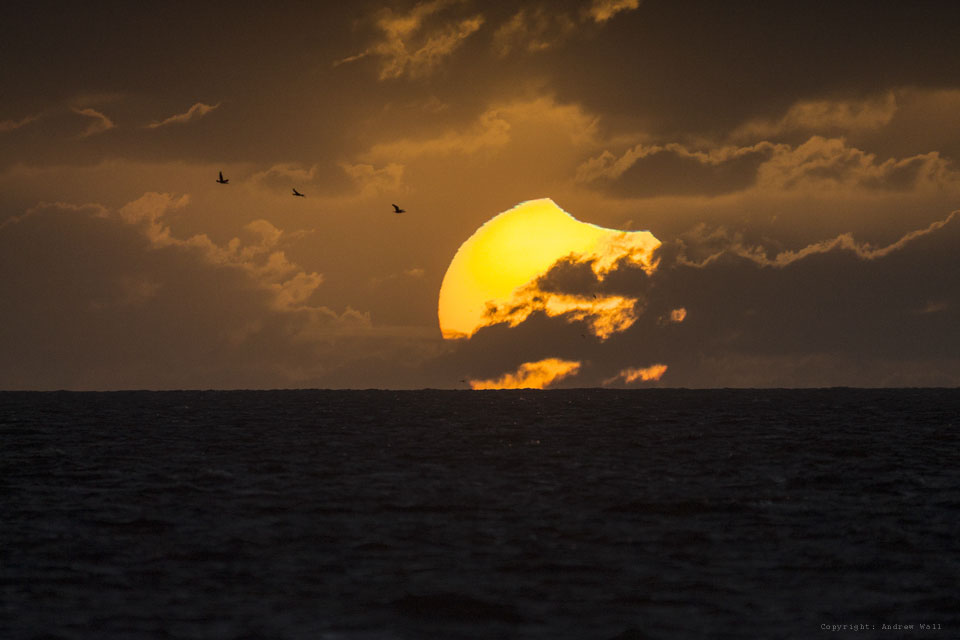 If you look closely, you will see something quite unusual about this setting Sun. There are birds flying to the Sun's left, but that's not so unusual. A dark sea covers the Sun's bottom, and dark clouds cover parts of the middle, but they are also not very unusual. More unusual is the occulted piece at the top right. And that's no occulting cloud -- that's the Moon. Yesterday the Moon moved in front of part of the Sun as visible from Australia, and although many locations reported annoying clouds, a partially eclipsed Sun would occasionally peak through as it set. The above image was captured yesterday on the western horizon of Adelaide, South Australia. The maximum eclipse was visible only from a small part of Antarctica where the entire Moon could be seen covering the entire center of the Sun in what is known as an annular eclipse, leaving only a ring of fire from the Sun peaking out around the edges. The next solar eclipse will be another partial eclipse, will occur on 2014 October 23, and will be visible from most of North America near sunset.
__________________
1st in Kommisar's 2009 SM Tournament 1st in I Love You`s 2009 New Year`s Tournament 3rd in EnR's Mashfest '08 tournament 5th in Phynx's Unofficial FFR Tournament 9th in D3 of the 2008-2009 4th Official FFR Tournament 10th in D5 of the 2010 5th Official FFR Tournament 10th in D6 of the 2011-2012 6th Official FFR Tournament FMO AAA Count: 71 FGO AAA Count: 10 Bluearrowll = The Canadian player who can not detect awkward patterns. If it's awkward for most people, it's normal for Terry. If the file is difficult but super straight forward, he has issues. If he's AAAing a FGO but then heard that his favorite Hockey team was losing by a point, Hockey > FFR PS: Cool AAA's Terry - I Love You An Alarm Clock's Haiku beep beep beep beep beep beep beep beep beep beep beep beep beep beep beep beep beep - ieatyourlvllol |
|
|

|
|
|
#922 |
|
FFR Veteran
|
Why was this unstickied? This is probably the best thread on the board right now, simply because of the sheer dedication blue commits to it. These reads are always interesting too.
|
|
|

|
|
|
#923 |
|
⊙▃⊙
|
I believe it was unstickied because it wasn't deemed an important thread, but i'll leave it to an admin or whatnot to give the explanation - the unstickied thread is certainly harder to find than the stickied one though particularly when Chit Chat is active lol. It makes its way to page 2 sometimes.
Daily Suspicious0bserver's Weather Post: May 1, 2014 What's in the sky tonight? May 1, 2014 -Brilliant Mars, shining in the southeast after dusk, has been drawing closer to Gamma Virginis (Porrima), magnitude 2.7. Look for the little star about 2° to Mars's upper right. They'll appear closest (1.4° apart) on May 4th and 5th. Gamma Vir is a fine, tight telescopic double with a current separation of 2.1 arcseconds. Take a look at it with your scope at high power after you're done with Mars! -Last night, April 30th, the interplanetary magnetic field (IMF) near Earth tipped south, opening a crack in our planet's magnetosphere. Solar wind poured in and ignited a display of auroras bright enough to pierce the Spring twilight around the Arctic Circle. Nancy Dean sends this picture from Sterling, Alaska. "Bright and beautiful auroras danced all night across our Alaskan sky," says Dean. "The colors of sunset made the display even better." Meanwhile in the southern hemisphere, autumn is unfolding, and the night sky is growing darker. The display was even more dramatic there. Photographer Brendan Davey says "the glow from Tasmania was very bright." The crack in Earth's magnetosphere has mostly closed, but the IMF could open it again. NOAA forecasters estimate a 50% chance of polar geomagnetic storms on May 1st. 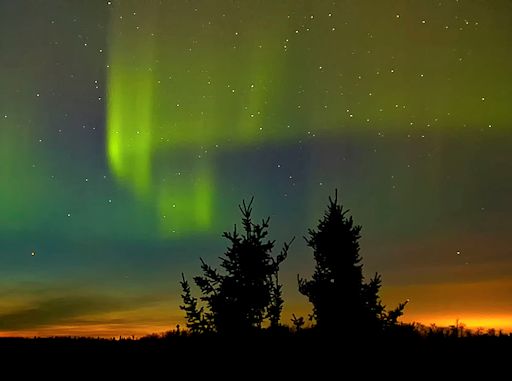 Astro Picture of the Day: May 1, 2014 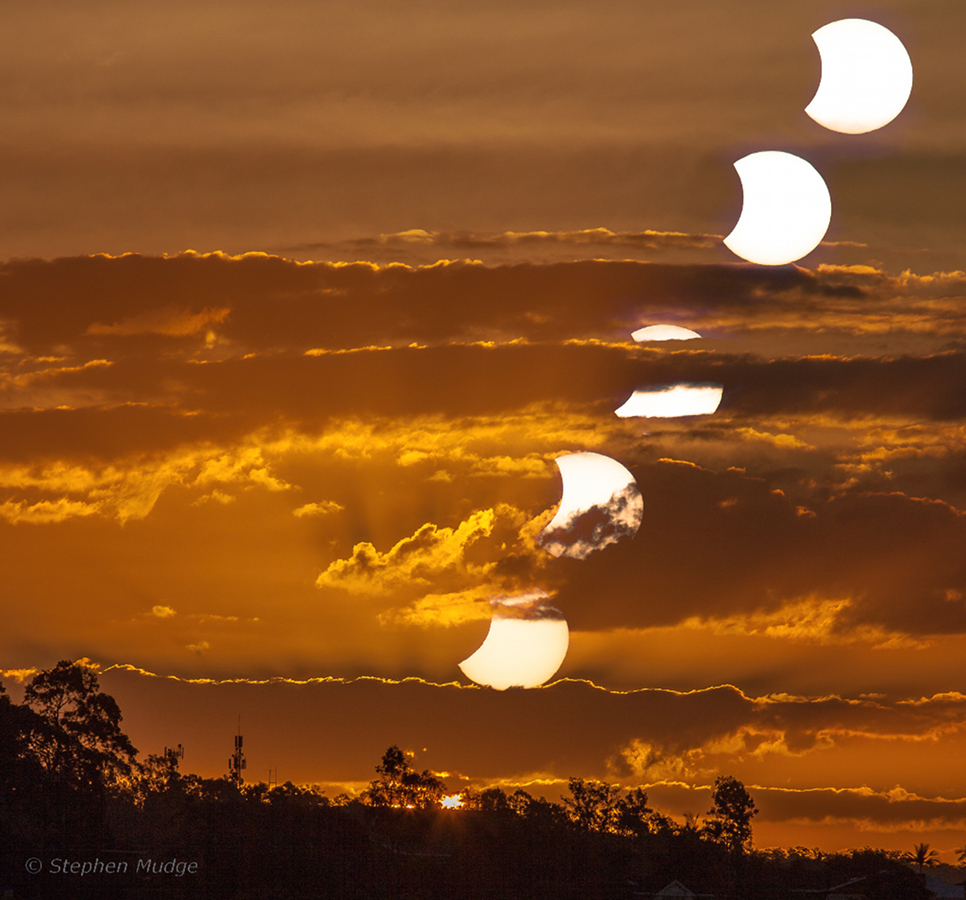 In skies over Brisbane at the southeastern corner of Queensland, Australia, Planet Earth, the Sun and New Moon set together on April 29. There the celestial line-up, the first solar eclipse of 2014, was seen as a partial solar eclipse. This dramatic composite is a digital stack of images taken about 5 minutes apart with telephoto lens and solar filter. It follows the eclipse in progress, approaching a western horizon where crepuscular rays from cloud banks in silhouette joined the silhouetted Moon. From Brisbane, the maximum eclipse phase with the Moon covering about 25% of the Sun occurred just after sunset. Only from a remote spot on the continent of Antarctica was it even possible to see the eclipse in its brief annular phase, the entire dark lunar disk surrounded by a thin, bright ring of fire.
__________________
1st in Kommisar's 2009 SM Tournament 1st in I Love You`s 2009 New Year`s Tournament 3rd in EnR's Mashfest '08 tournament 5th in Phynx's Unofficial FFR Tournament 9th in D3 of the 2008-2009 4th Official FFR Tournament 10th in D5 of the 2010 5th Official FFR Tournament 10th in D6 of the 2011-2012 6th Official FFR Tournament FMO AAA Count: 71 FGO AAA Count: 10 Bluearrowll = The Canadian player who can not detect awkward patterns. If it's awkward for most people, it's normal for Terry. If the file is difficult but super straight forward, he has issues. If he's AAAing a FGO but then heard that his favorite Hockey team was losing by a point, Hockey > FFR PS: Cool AAA's Terry - I Love You An Alarm Clock's Haiku beep beep beep beep beep beep beep beep beep beep beep beep beep beep beep beep beep - ieatyourlvllol |
|
|

|
|
|
#924 |
|
⊙▃⊙
|
Daily Suspicious0bserver's Weather Post:
May 2a, 2014 What's in the sky tonight? May 2, 2014 -How soon after sunset can you see the first stars and planets coming out? The brightest is Jupiter. Look for it high in the west, almost two fist-widths at arm's length above or upper left of the Moon. The second brightest is Sirius, sinking in the southwest. -NOAA forecasters have boosted the odds of an M-class flare today to 35%. There are two possible blast sites: Earth-facing sunspots AR2047 and AR2049 both have 'beta-gamma' magnetic fields that harbor energy for strong eruptions. -Researchers pondering the possibilities of life on Mars have long focused their attention on halobacteria--a type of terrestrial extremophile that uses salt to shield itself from harsh radiation. On April 20th, the students of Earth to Sky Calculus flew a colony of halobacteria onboard a suborbital helium balloon to the Edge of Space. The microbes didn't merely survive, they are now thriving in the students' biology classroom back on Earth. During the ascent to 102,400 feet, these bacteria experienced temperatures as low as -60 C, air pressures only 1% that at sea-level, and radiation levels more than 25-times Earth-normal. All of these conditions are akin to those on Mars. ( See a 74 MB movie of the bacteria floating in the stratosphere.) Instead of chlorophyll, halobacteria use the photosynthetic molecule bacteriorhodopsin, which produces chemical energy from sunlight without producing oxygen. This photosynthetic pigment colors the halobacteria colony pinkish-red--the same hue visible in the incubated petri dish. The students are planning to repeat the experiment with another flight possibly as early as this weekend.  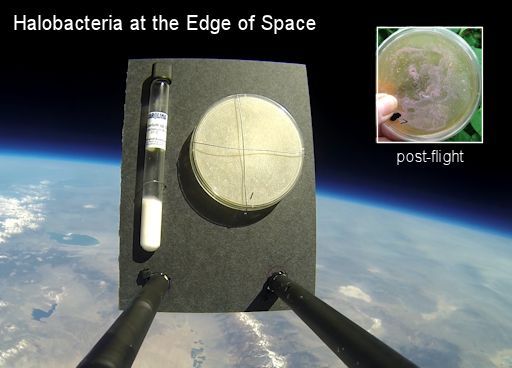 Astro Picture of the Day: May 2, 2014 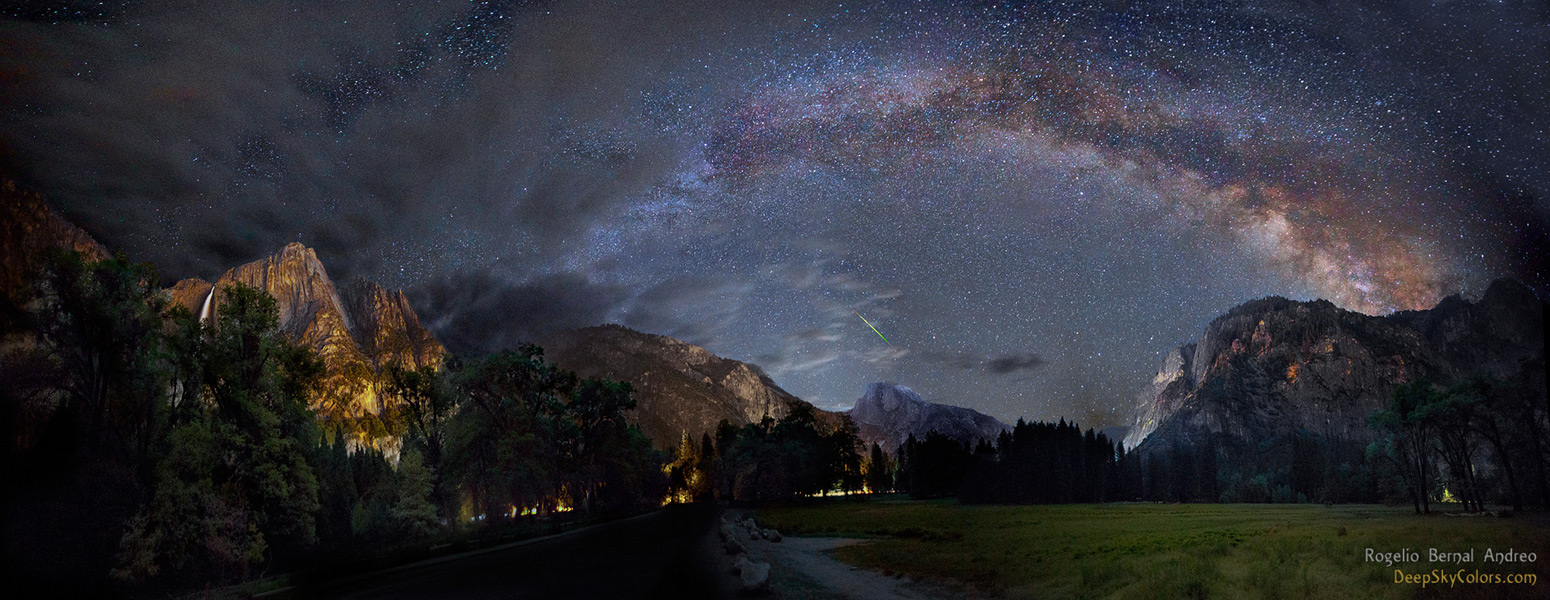 Captured one night last May this eight frame mosaic starts on the left, down Northside Drive through Yosemite National Park. It ends thousands of light-years away though, as the arc of the Milky Way tracks toward the center of our galaxy on the right, far beyond the park's rugged skyline. That night was still moonless when the storm clouds retreated, so the rocky faces of the surrounding mountains are lit by campfires and artifical lights. Yosemite Falls is at the left. The granite face of Half Dome juts above the far horizon, near the center of the view. The remarkable flash above it is a bright meteor. Part of the annual Eta Aquarid meteor shower the colorful streak is moving up, its trail pointing directly back to the shower's radiant, low in Aquarius. This year's Eta Aquarids should peak in the moonless early morning hours of May 6 as the Earth sweeps through dust from the tail of Comet Halley.
__________________
1st in Kommisar's 2009 SM Tournament 1st in I Love You`s 2009 New Year`s Tournament 3rd in EnR's Mashfest '08 tournament 5th in Phynx's Unofficial FFR Tournament 9th in D3 of the 2008-2009 4th Official FFR Tournament 10th in D5 of the 2010 5th Official FFR Tournament 10th in D6 of the 2011-2012 6th Official FFR Tournament FMO AAA Count: 71 FGO AAA Count: 10 Bluearrowll = The Canadian player who can not detect awkward patterns. If it's awkward for most people, it's normal for Terry. If the file is difficult but super straight forward, he has issues. If he's AAAing a FGO but then heard that his favorite Hockey team was losing by a point, Hockey > FFR PS: Cool AAA's Terry - I Love You An Alarm Clock's Haiku beep beep beep beep beep beep beep beep beep beep beep beep beep beep beep beep beep - ieatyourlvllol |
|
|

|
|
|
#925 |
|
⊙▃⊙
|
Daily Suspicious0bserver's Weather Post:
May 3, 2014 What's in the sky tonight? May 3, 2014 -The waxing crescent Moon shines below Jupiter in the west at dusk. Above Jupiter are Pollux and Castor. -New sunspot AR2051 is growing rapidly and has developed a 'delta-class' magnetic field that harbors energy for X-class solar flares. Any explosions this weekend would likely be geoeffective as the sunspot is approximately facing Earth. -On May 24th, Earth will pass through a cloud of debris from periodic comet 209P/LINEAR. The result could be a new meteor shower. Forecasters expect meteor rates as high as 200 per hour when Earth crosses the debris zone. There has even been talk of a possible meteor storm. These are lofty predictions for a comet that looks so puny. "This image was taken on April 30th (4:35 UTC) using our 20-inch telescope located in New Mexico," says Bill Cooke of NASA's Meteoroid Environment Office. "A 3 minute exposure, it shows 14th magnitude Comet 209P/LINEAR shining faintly among the stars of Ursa Major. At the time of this image, 209P was just over 40 million km from Earth, heading for a relatively close approach (8.3 million km) with us on May 29th." The comet is faint because it is a poor producer of dust. How, then, could it create a debris cloud capable of triggering a fine meteor shower? The answer is in the timing. The debris we are about to hit was shed by the comet not in 2014 but rather in the 1800s, when forecasters think the comet was probably more active. The best place to see the display is North America where it will be nighttime during the shower's peak. Meteors will emerge from a radiant point high in the sky, in the constellation Camelopardalis not far from the North Star. Peak rates are expected between 6:00 and 08:00 UT or 2 and 4 o'clock in the morning EDT on May 24th. No one can say for sure how strong this new shower will be; possibilities range from "storm" to "dud." Stay tuned for updates as the debris zone approaches. 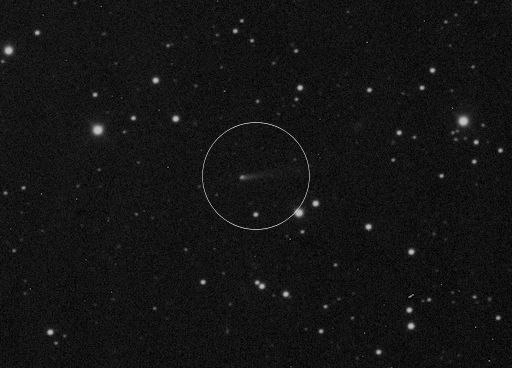 Astro Picture of the Day: May 3, 2014  The yellowish star near center in this dusty telescopic skyview is T Tauri, prototype of the class of T Tauri variable stars. Just next door is the yellow cosmic cloud historically known as Hind's Variable Nebula (NGC 1555). Over 400 light-years away, at the edge of an otherwise invisible molecular cloud, both star and nebula are seen to vary significantly in brightness but not necessarily at the same time, adding to the mystery of the intriguing region. T Tauri stars are now generally recognized as young (less than a few million years old), sun-like stars still in the early stages of formation. To further complicate the picture, infrared observations indicate that T Tauri itself is part of a multiple system and suggest that the associated Hind's Nebula may also contain a very young stellar object. The naturally colored image spans about 7 light-years at the estimated distance of T Tauri.
__________________
1st in Kommisar's 2009 SM Tournament 1st in I Love You`s 2009 New Year`s Tournament 3rd in EnR's Mashfest '08 tournament 5th in Phynx's Unofficial FFR Tournament 9th in D3 of the 2008-2009 4th Official FFR Tournament 10th in D5 of the 2010 5th Official FFR Tournament 10th in D6 of the 2011-2012 6th Official FFR Tournament FMO AAA Count: 71 FGO AAA Count: 10 Bluearrowll = The Canadian player who can not detect awkward patterns. If it's awkward for most people, it's normal for Terry. If the file is difficult but super straight forward, he has issues. If he's AAAing a FGO but then heard that his favorite Hockey team was losing by a point, Hockey > FFR PS: Cool AAA's Terry - I Love You An Alarm Clock's Haiku beep beep beep beep beep beep beep beep beep beep beep beep beep beep beep beep beep - ieatyourlvllol |
|
|

|
|
|
#926 |
|
⊙▃⊙
|
Daily Suspicious0bserver's Weather Post:
May 4, 2014 What's in the sky tonight? May 4, 2014 -Earth is entering a stream of debris from Halley's Comet, source of the annual eta Aquarid meteor shower. Forecasters expect the shower to peak on the night of May 5-6 with as many as 60 meteors per hour in the southern hemisphere and half that number in the north. No matter where you live, the best time to look is during the dark hours before local sunrise on May 6th. -On May. 3, 2014, the network reported 6 fireballs. (5 sporadics, 1 eta Aquariid)  Astro Picture of the Day: May 4, 2014 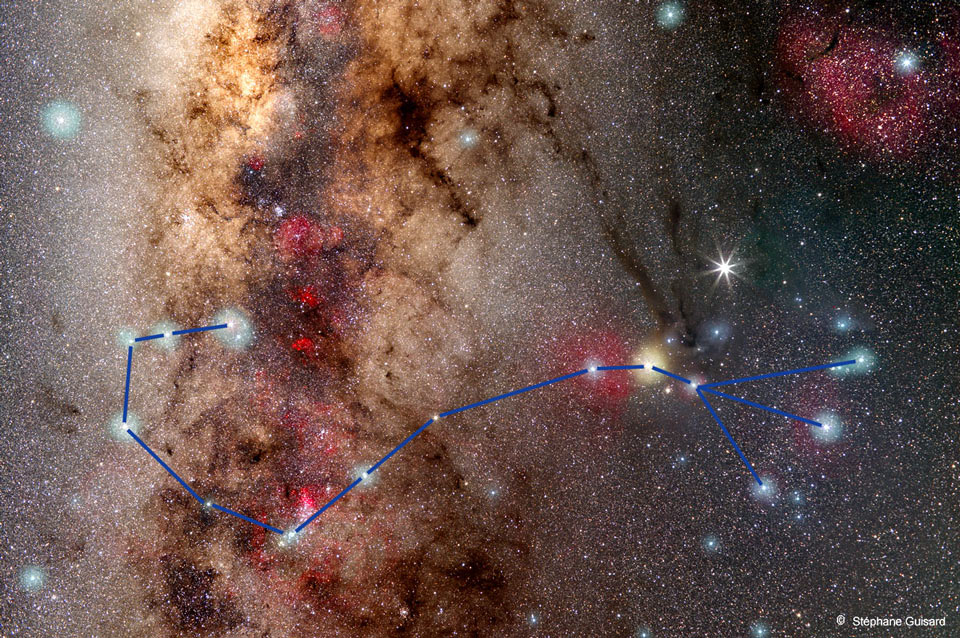  If Scorpius looked this good to the unaided eye, humans might remember it better. Scorpius more typically appears as a few bright stars in a well-known but rarely pointed out zodiacal constellation. To get a spectacular image like this, though, one needs a good camera, color filters, and a digital image processor. To bring out detail, the above image not only involved long duration exposures taken in several colors, but one exposure in a very specific red color emitted by hydrogen. The resulting image shows many breathtaking features. Vertically across the image left is part of the plane of our Milky Way Galaxy. Visible there are vast clouds of bright stars and long filaments of dark dust. Jutting out diagonally from the Milky Way in the image center are dark dust bands known as the Dark River. This river connects to several bright stars on the right that are part of Scorpius' head and claws, and include the bright star Antares. Above and right of Antares is an even brighter planet Jupiter. Numerous red emission nebulas and blue reflection nebulas are visible throughout the image. Scorpius appears prominently in southern skies after sunset during the middle of the year.
__________________
1st in Kommisar's 2009 SM Tournament 1st in I Love You`s 2009 New Year`s Tournament 3rd in EnR's Mashfest '08 tournament 5th in Phynx's Unofficial FFR Tournament 9th in D3 of the 2008-2009 4th Official FFR Tournament 10th in D5 of the 2010 5th Official FFR Tournament 10th in D6 of the 2011-2012 6th Official FFR Tournament FMO AAA Count: 71 FGO AAA Count: 10 Bluearrowll = The Canadian player who can not detect awkward patterns. If it's awkward for most people, it's normal for Terry. If the file is difficult but super straight forward, he has issues. If he's AAAing a FGO but then heard that his favorite Hockey team was losing by a point, Hockey > FFR PS: Cool AAA's Terry - I Love You An Alarm Clock's Haiku beep beep beep beep beep beep beep beep beep beep beep beep beep beep beep beep beep - ieatyourlvllol |
|
|

|
|
|
#927 |
|
⊙▃⊙
|
Daily Suspicious0bserver's Weather Post:
May 5, 2014 What's in the sky tonight? May 5, 2014 -Saturn (magnitude +0.1, in Libra) reaches opposition this week. It now rises in twilight and stands highest in the south around 1 or 2 a.m. By then it's far left of Mars, and half as far to the upper right of Antares. -Venus (magnitude –4.2) is the bright "Morning Star" low in the east during dawn. How late into the growing daylight can you follow it? Astro Picture of the Day: May 5, 2014  How do you calibrate a huge gravitational lens? In this case the lens is the galaxy cluster Abell 383, a massive conglomeration of galaxies, hot gas, and dark matter that lies about 2.5 billion light years away (redshift z=0.187). What needs calibrating is the mass of the cluster, in particular the amount and distribution of dark matter. A new calibration technique has been tested recently that consists of waiting for supernovas of a very specific type to occur behind a galaxy cluster, and then figuring out how much the cluster must have magnified these supernovas through gravitational lensing. This technique complements other measures including computing the dark matter needed to contain internal galaxy motions, to confine cluster hot gas, and to create the gravitational lens image distortions. Pictured above from the Hubble Space Telescope, galaxy cluster A383 shows its gravitational lens capabilities on the right by highly distorting background galaxies behind the cluster center. On the left is a distant galaxy shown both before and after a recent revealing supernova. To date, calibration-quality supernovas of Type Ia have been found behind two other galaxy clusters by the Cluster Lensing And Supernova survey with Hubble (CLASH) project.
__________________
1st in Kommisar's 2009 SM Tournament 1st in I Love You`s 2009 New Year`s Tournament 3rd in EnR's Mashfest '08 tournament 5th in Phynx's Unofficial FFR Tournament 9th in D3 of the 2008-2009 4th Official FFR Tournament 10th in D5 of the 2010 5th Official FFR Tournament 10th in D6 of the 2011-2012 6th Official FFR Tournament FMO AAA Count: 71 FGO AAA Count: 10 Bluearrowll = The Canadian player who can not detect awkward patterns. If it's awkward for most people, it's normal for Terry. If the file is difficult but super straight forward, he has issues. If he's AAAing a FGO but then heard that his favorite Hockey team was losing by a point, Hockey > FFR PS: Cool AAA's Terry - I Love You An Alarm Clock's Haiku beep beep beep beep beep beep beep beep beep beep beep beep beep beep beep beep beep - ieatyourlvllol |
|
|

|
|
|
#928 |
|
⊙▃⊙
|
Daily Suspicious0bserver's Weather Post:
May 6, 2014 What's in the sky tonight? May 6, 2014 -First-quarter Moon (exactly so at 11:15 p.m. Eastern Daylight Time). The Moon shines in Cancer above the dim head of Hydra. Well to the Moon's upper left is Regulus, forming the bottom of the Sickle of Leo. -Earth is passing through a stream of debris from Halley's Comet, source of the annual eta Aquarid meteor shower. Forecasters expect the shower to peak on the night of May 5-6 with as many as 60 meteors per hour in the southern hemisphere and half that number in the north. No matter where you live, the best time to look is during the dark hours before local sunrise on May 6th. [photo gallery] [meteor radar] Alan Dyer caught this speck of "Halley dust" disintegrating over Portal, Arizona, on May 5th. "Portal, Arizona, has some of the finest skies on the continent," says Dyer. "Last night I saw several Eta Aquarids in just casual glances skyward as I was busy shooting images of the Milky Way in the pre-dawn hours. This frame nicely caught the entire meteor showing a change of colour in the ionization trail as it descended deeper into our atmosphere, typical of bright meteors." 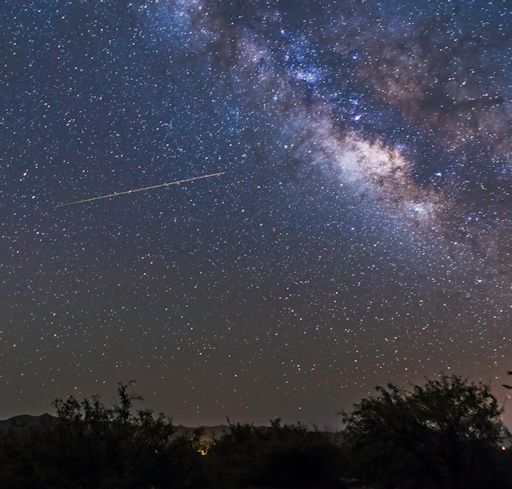 Astro Picture of the Day: May 6, 2014  Our Sun has become quite a busy place. Taken only two weeks ago, the Sun was captured sporting numerous tumultuous regions including active sunspot regions AR 2036 near the image top and AR 2036 near the center. Only four years ago the Sun was emerging from an unusually quiet Solar Minimum that had lasted for years. The above image was recorded in a single color of light called Hydrogen Alpha, inverted, and false colored. Spicules cover much of the Sun's face like a carpet. The gradual brightening towards the Sun's edges is caused by increased absorption of relatively cool solar gas and called limb darkening. Just over the Sun's edges, several filamentary prominences protrude, while prominences on the Sun's face are seen as light streaks. Possibly the most visually interesting of all are the magnetically tangled active regions containing relatively cool sunspots, seen as white dots. Currently at Solar Maximum -- the most active phase in its 11-year magnetic cycle, the Sun's twisted magnetic field is creating numerous solar "sparks" which include eruptive solar prominences, coronal mass ejections, and flares which emit clouds of particles that may impact the Earth and cause auroras. One flare two years ago released such a torrent of charged particles into the Solar System that it might have disrupted satellites and compromised power grids had it struck planet Earth.
__________________
1st in Kommisar's 2009 SM Tournament 1st in I Love You`s 2009 New Year`s Tournament 3rd in EnR's Mashfest '08 tournament 5th in Phynx's Unofficial FFR Tournament 9th in D3 of the 2008-2009 4th Official FFR Tournament 10th in D5 of the 2010 5th Official FFR Tournament 10th in D6 of the 2011-2012 6th Official FFR Tournament FMO AAA Count: 71 FGO AAA Count: 10 Bluearrowll = The Canadian player who can not detect awkward patterns. If it's awkward for most people, it's normal for Terry. If the file is difficult but super straight forward, he has issues. If he's AAAing a FGO but then heard that his favorite Hockey team was losing by a point, Hockey > FFR PS: Cool AAA's Terry - I Love You An Alarm Clock's Haiku beep beep beep beep beep beep beep beep beep beep beep beep beep beep beep beep beep - ieatyourlvllol |
|
|

|
|
|
#929 |
|
⊙▃⊙
|
Daily Suspicious0bserver's Weather Post:
May 7, 2014 What's in the sky tonight? May 7, 2014 -Just above the Moon at nightfall are Regulus and the Sickle of Leo. -The eta Aquarid meteor shower, caused by debris from Halley's Comet, is still active on May 7th. Incoming data from the Canadian Meteor Orbit Radar show a hot spot of meteor activity near the head of Aquarius. These meteors are best seen during the dark hours before sunrise. Set your alarm for dawn and take a look! -The odds of a geoeffective solar flare are dropping as sunspot AR2051 rotates off the visible solar disk. NASA's Solar Dynamics Observatory recorded this parting shot during the late hours of May 6th. This plume of plasma, propelled away from the sun's surface by an M-class explosion in the sunspot's magnetic canopy, is as tall as a dozen planet Earths. Much of the material escaped the sun in the form of a coronal mass ejection (CME), not Earth-directed: movie. Stronger blasts are possible on May 7th. The sunspot has a 'delta-class' magnetic field that harbors energy for powerful X-flares. Any such eruptions, however, will almost surely miss our planet as AR2051 heads for the farside of the sun. On May. 6, 2014, the network reported 28 fireballs. (21 sporadics, 7 eta Aquariids) 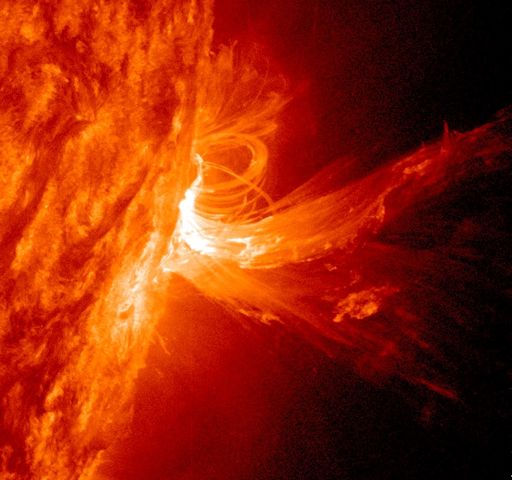  Astro Picture of the Day: May 7, 2014 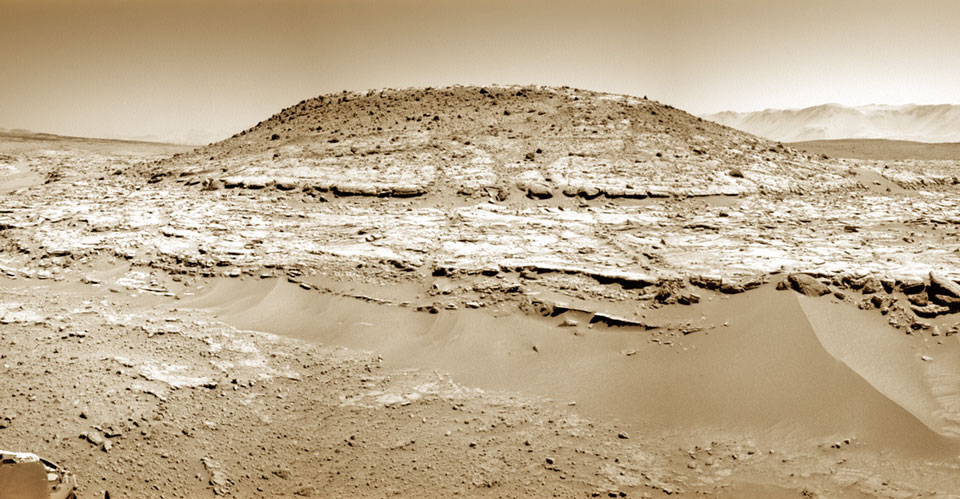 What has the Curiosity rover come across on Mars? Dubbed Mount Remarkable, the rolling robot has chanced upon this notable 5-meter tall mound during its continuing journey around and, eventually, up 5.5-kilometer high Mt. Sharp. Unsure of the density of the surrounding layered sandstone, the human team on Earth has instructed the car-sized rover on Mars to drill into a rock on the side of Mt. Remarkable to investigate. Quite possibly, water involved in creating the dense sandstone could have helped to support ancient life on the red planet. Mt. Sharp, the unusual central peak of Gale Crater, has a similar base-to-peak height as Earth's Mt. Everest.
__________________
1st in Kommisar's 2009 SM Tournament 1st in I Love You`s 2009 New Year`s Tournament 3rd in EnR's Mashfest '08 tournament 5th in Phynx's Unofficial FFR Tournament 9th in D3 of the 2008-2009 4th Official FFR Tournament 10th in D5 of the 2010 5th Official FFR Tournament 10th in D6 of the 2011-2012 6th Official FFR Tournament FMO AAA Count: 71 FGO AAA Count: 10 Bluearrowll = The Canadian player who can not detect awkward patterns. If it's awkward for most people, it's normal for Terry. If the file is difficult but super straight forward, he has issues. If he's AAAing a FGO but then heard that his favorite Hockey team was losing by a point, Hockey > FFR PS: Cool AAA's Terry - I Love You An Alarm Clock's Haiku beep beep beep beep beep beep beep beep beep beep beep beep beep beep beep beep beep - ieatyourlvllol |
|
|

|
|
|
#930 |
|
⊙▃⊙
|
Daily Suspicious0bserver's Weather Post:
May 8, 2014 What's in the sky tonight? May 8, 2014 -Sometime late this evening (roughly 10 p.m. depending on where you live), bright Capella declining in the northwest will be exactly as high as bright Vega climbing in the northeast. How accurately can you time their altitude balance? Each day it will come four minutes earlier. -The sunspot number is increasing this week as a crowd of dark cores emerges over the sun's eastern limb. One of the spots in the crowd, AR2056, has a 'beta-gamma' magnetic field that harbors energy for M-class solar flares. The odds of a geoeffective eruption will increase in the days ahead as AR2056 turns toward Earth. NOAA forecasters estimate a 25% chance of M-flares on May 8th. -On May. 7, 2014, the network reported 20 fireballs.(12 sporadics, 8 eta Aquariids) 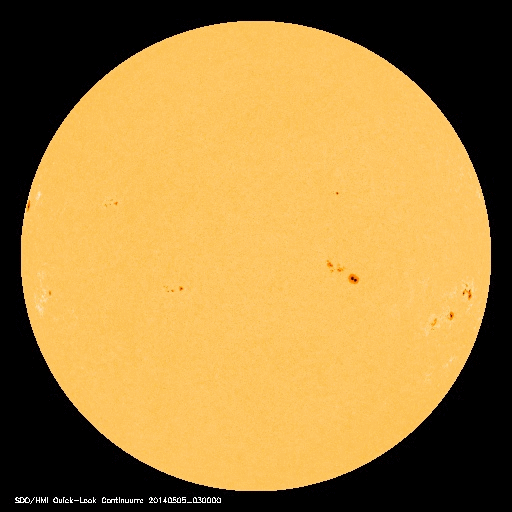  Astro Picture of the Day: May 8, 2014 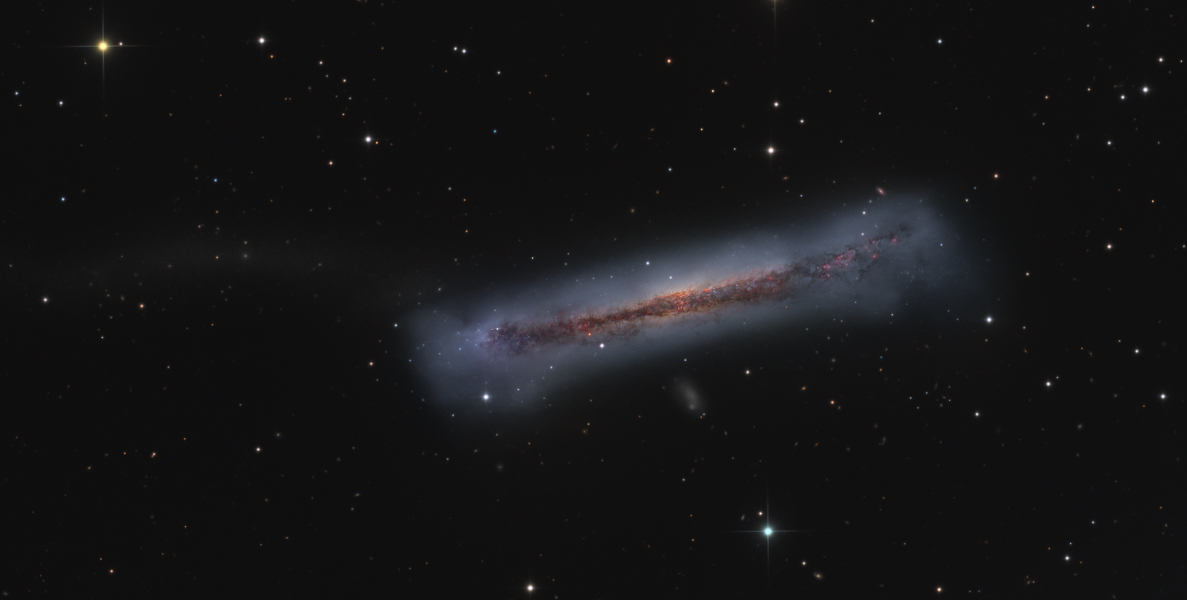 Sharp telescopic views of NGC 3628 show a puffy galactic disk divided by dark dust lanes. Of course, this deep portrait of the magnificent, edge-on spiral galaxy puts some astronomers in mind of its popular moniker, the Hamburger Galaxy. It also reveals a small galaxy nearby, likely a satellite of NGC 3628, and a faint but extensive tidal tail. The tantalizing island universe itself is about 100,000 light-years across and 35 million light-years away in the northern springtime constellation Leo. Its drawn out tail stretches for about 300,000 light-years, even beyond the left edge of the wide frame. NGC 3628 shares its neighborhood in the local Universe with two other large spirals M65 and M66 in a grouping otherwise known as the Leo Triplet. Gravitational interactions with its cosmic neighbors are likely responsible for creating the tidal tail, as well as the extended flare and warp of this spiral's disk.
__________________
1st in Kommisar's 2009 SM Tournament 1st in I Love You`s 2009 New Year`s Tournament 3rd in EnR's Mashfest '08 tournament 5th in Phynx's Unofficial FFR Tournament 9th in D3 of the 2008-2009 4th Official FFR Tournament 10th in D5 of the 2010 5th Official FFR Tournament 10th in D6 of the 2011-2012 6th Official FFR Tournament FMO AAA Count: 71 FGO AAA Count: 10 Bluearrowll = The Canadian player who can not detect awkward patterns. If it's awkward for most people, it's normal for Terry. If the file is difficult but super straight forward, he has issues. If he's AAAing a FGO but then heard that his favorite Hockey team was losing by a point, Hockey > FFR PS: Cool AAA's Terry - I Love You An Alarm Clock's Haiku beep beep beep beep beep beep beep beep beep beep beep beep beep beep beep beep beep - ieatyourlvllol |
|
|

|
|
|
#931 |
|
⊙▃⊙
|
Daily Suspicious0bserver's Weather Post:
May 9, 2014 What's in the sky tonight? May 9, 2014 -The waxing gibbous Moon forms a curving line tonight with Mars to its left and Spica to Mars's lower left. -An interplanetary shock wave, origin unknown, hit Earth's magnetic field during the late hours of May 7th. Although the weak impact did not spark a geomagnetic storm, solar wind conditions in the wake of the shock have been favorable for auroras. Nancy Dean took this picture last night on Mount Spur, Alaska. "The sunset was still showing strong on May 8th when the Northern Lights came out to dance across the Alaskan sky," says Dean. As northern spring unfolds, persistent twilight is spreading into the night skies of Alaska. It takes a bright display of auroras to be seen against such a backdrop. Dean's photo is evidence that a weak shock does not necessarily produce weak auroras. More lights are possible tonight. NOAA forecasters estimate a 30% chance of polar geomagnetic storms as Earth exits the wake of the shock. 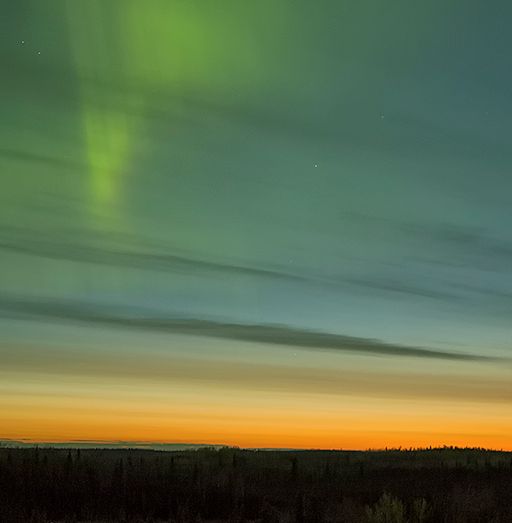 Astro Picture of the Day: May 9, 2014 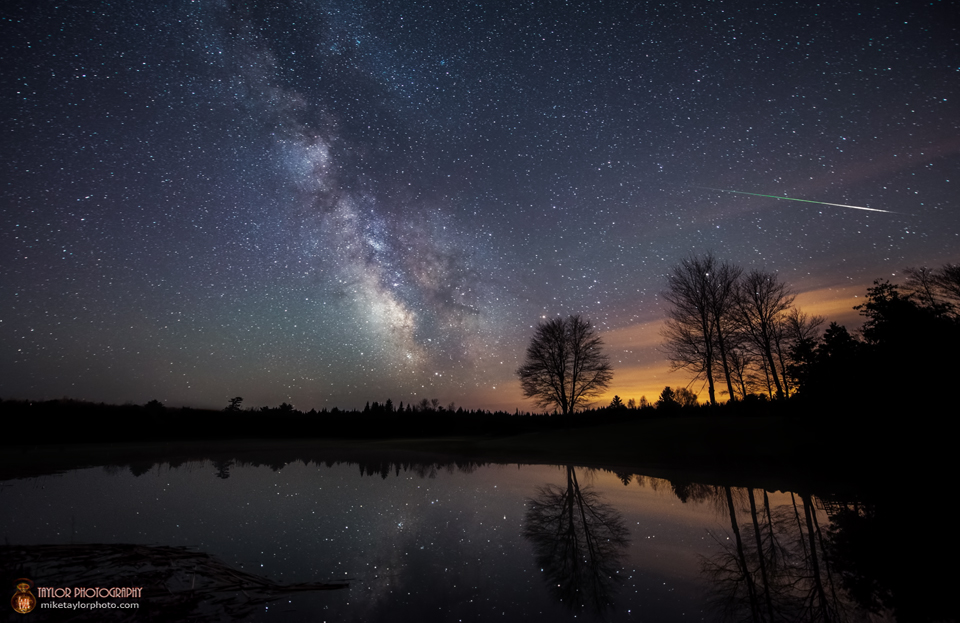 The early morning hours of May 6 were moonless when grains of cosmic dust streaked through dark skies. Swept up as planet Earth plows through dusty debris streams left behind periodic Comet Halley, the annual meteor shower is known as the Eta Aquarids. This inspired exposure captures a meteor streak moving left right through the frame. Its trail points back across the arc of the Milky Way to the shower's radiant above the local horizon in the constellation Aquarius. Known for speed Eta Aquarid meteors move fast, entering the atmosphere at about 66 kilometers per second. Still waters of the small pond near Albion, Maine, USA reflect the starry scene and the orange glow of nearby artificial lights scattered by a low cloud bank. Of course, northern hemisphere skygazers are expecting a new meteor shower on May 24, the Camelopardalids, caused by dust from periodic comet 209P/LINEAR.
__________________
1st in Kommisar's 2009 SM Tournament 1st in I Love You`s 2009 New Year`s Tournament 3rd in EnR's Mashfest '08 tournament 5th in Phynx's Unofficial FFR Tournament 9th in D3 of the 2008-2009 4th Official FFR Tournament 10th in D5 of the 2010 5th Official FFR Tournament 10th in D6 of the 2011-2012 6th Official FFR Tournament FMO AAA Count: 71 FGO AAA Count: 10 Bluearrowll = The Canadian player who can not detect awkward patterns. If it's awkward for most people, it's normal for Terry. If the file is difficult but super straight forward, he has issues. If he's AAAing a FGO but then heard that his favorite Hockey team was losing by a point, Hockey > FFR PS: Cool AAA's Terry - I Love You An Alarm Clock's Haiku beep beep beep beep beep beep beep beep beep beep beep beep beep beep beep beep beep - ieatyourlvllol |
|
|

|
|
|
#932 |
|
⊙▃⊙
|
Daily Suspicious0bserver's Weather Post:
May 10, 2014 What's in the sky tonight? May 10, 2014 -Bright Mars shines left of the Moon. Although they look rather close together, Mars is 260 times farther away — and twice as big in diameter. -Imagine what it would be like if, from time to time, a hole opened up in Earth's atmosphere and air went blowing out into space. On the sun, this happens all the time. The openings are called "coronal holes." NASA's Solar Dynamics Obervatory is monitoring one right now; it is the dark wedge-shaped region in this extreme ultraviolet image of the sun's southern hemisphere. Coronal holes are places in the sun's atmosphere where the magnetic field bends back and allows gas to escape. From such openings, solar wind blows out into space. A stream of solar wind flowing from this particular coronal hole could reach Earth on May 11-12, sparking auroras when it arrives. On the other hand, the stream might sail south of our planet, delivering only a glancing blow. Stay tuned for updates.  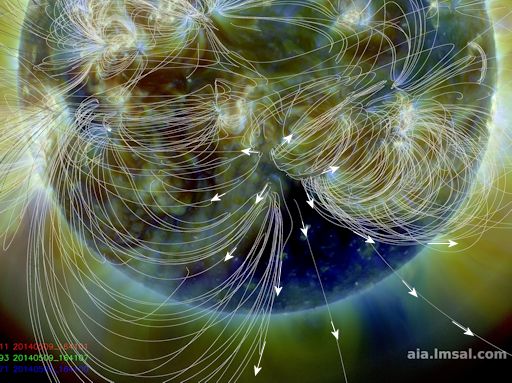 Astro Picture of the Day: May 10, 2014 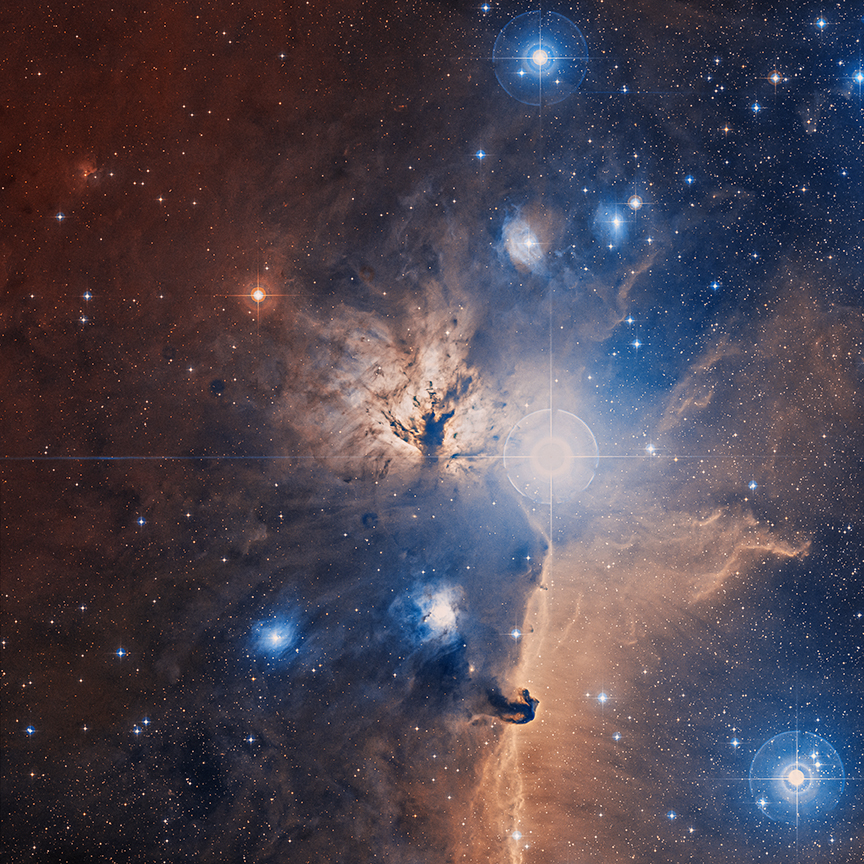 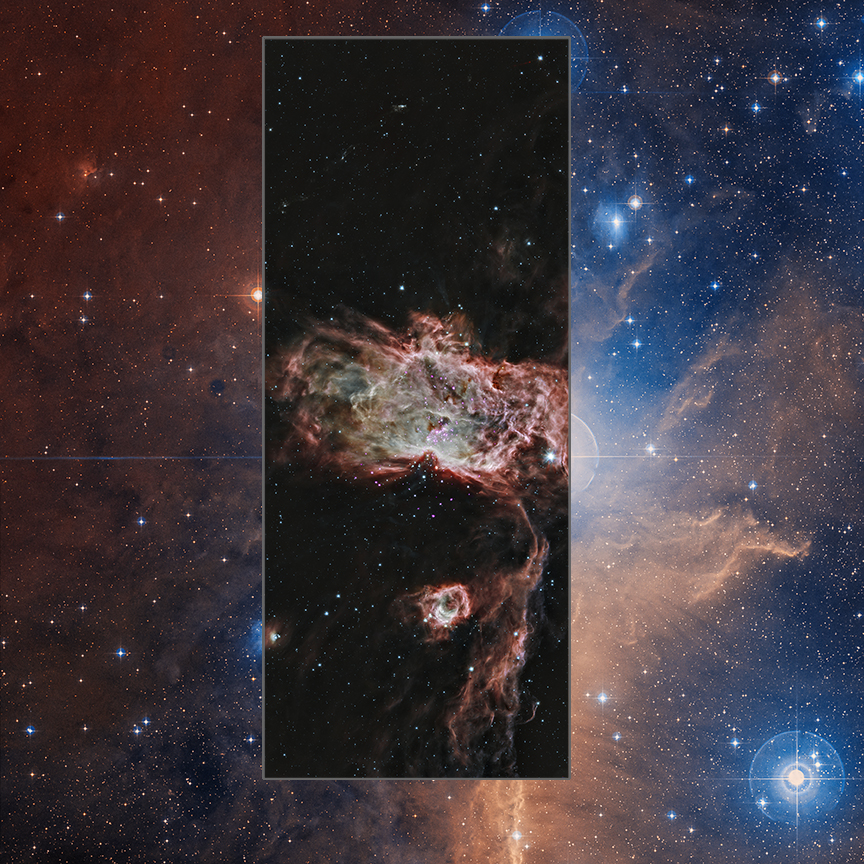 The Flame Nebula stands out in this optical image of the dusty, crowded star forming regions toward Orion's belt, a mere 1,400 light-years away. X-ray data from the Chandra Observatory and infrared images from the Spitzer Space Telescope can take you inside the glowing gas and obscuring dust clouds though. The second image will reveal many stars of the recently formed, embedded cluster NGC 2024, ranging in age from 200,000 years to 1.5 million years young. The X-ray/infrared composite image overlay spans about 15 light-years across the Flame's center. The X-ray/infrared data also indicate that the youngest stars are concentrated near the middle of the cluster. That's the opposite of the simplest models of star formation for the stellar nursery. They predict star formation to begin first in the denser center and progressively move outward toward the edges leaving the older stars, not the younger ones, in the center of the Flame Nebula.
__________________
1st in Kommisar's 2009 SM Tournament 1st in I Love You`s 2009 New Year`s Tournament 3rd in EnR's Mashfest '08 tournament 5th in Phynx's Unofficial FFR Tournament 9th in D3 of the 2008-2009 4th Official FFR Tournament 10th in D5 of the 2010 5th Official FFR Tournament 10th in D6 of the 2011-2012 6th Official FFR Tournament FMO AAA Count: 71 FGO AAA Count: 10 Bluearrowll = The Canadian player who can not detect awkward patterns. If it's awkward for most people, it's normal for Terry. If the file is difficult but super straight forward, he has issues. If he's AAAing a FGO but then heard that his favorite Hockey team was losing by a point, Hockey > FFR PS: Cool AAA's Terry - I Love You An Alarm Clock's Haiku beep beep beep beep beep beep beep beep beep beep beep beep beep beep beep beep beep - ieatyourlvllol |
|
|

|
|
|
#933 |
|
⊙▃⊙
|
Daily Suspicious0bserver's Weather Post:
May 11, 2014 What's in the sky tonight? May 11, 2014 -Now the Moon is positioned between Mars and Spica (for the Americas in the evening). -Jupiter shines within the western Arch of Spring as twilight fades. The top of the Arch is formed by Pollux and Castor, roughly horizontal. To their lower left is Procyon, the left end of the Arch. The right end is formed by Menkalinen and then Capella. Jupiter is gradually moving toward the Arch's upper left side.  Astro Picture of the Day: May 11, 2014 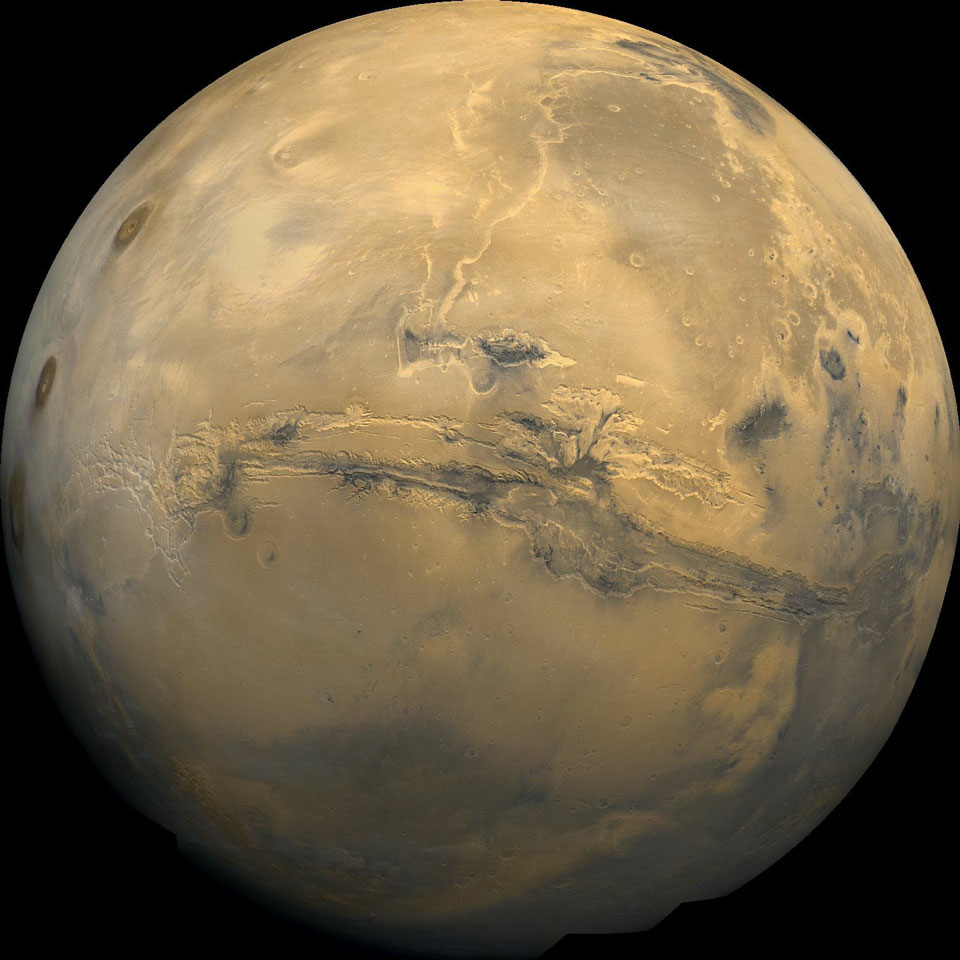 The largest canyon in the Solar System cuts a wide swath across the face of Mars. Named Valles Marineris, the grand valley extends over 3,000 kilometers long, spans as much as 600 kilometers across, and delves as much as 8 kilometers deep. By comparison, the Earth's Grand Canyon in Arizona, USA is 800 kilometers long, 30 kilometers across, and 1.8 kilometers deep. The origin of the Valles Marineris remains unknown, although a leading hypothesis holds that it started as a crack billions of years ago as the planet cooled. Several geologic processes have been identified in the canyon. The above mosaic was created from over 100 images of Mars taken by Viking Orbiters in the 1970s.
__________________
1st in Kommisar's 2009 SM Tournament 1st in I Love You`s 2009 New Year`s Tournament 3rd in EnR's Mashfest '08 tournament 5th in Phynx's Unofficial FFR Tournament 9th in D3 of the 2008-2009 4th Official FFR Tournament 10th in D5 of the 2010 5th Official FFR Tournament 10th in D6 of the 2011-2012 6th Official FFR Tournament FMO AAA Count: 71 FGO AAA Count: 10 Bluearrowll = The Canadian player who can not detect awkward patterns. If it's awkward for most people, it's normal for Terry. If the file is difficult but super straight forward, he has issues. If he's AAAing a FGO but then heard that his favorite Hockey team was losing by a point, Hockey > FFR PS: Cool AAA's Terry - I Love You An Alarm Clock's Haiku beep beep beep beep beep beep beep beep beep beep beep beep beep beep beep beep beep - ieatyourlvllol |
|
|

|
|
|
#934 |
|
⊙▃⊙
|
Daily Suspicious0bserver's Weather Post:
May 12, 2014 What's in the sky tonight? May 12, 2014 -Three zero-magnitude stars shine after dusk in May: Arcturus high in the southeast, Vega much lower in the northeast, and Capella in the northwest. They appear so bright because each is at least 60 times as luminous as the Sun, and they're all relatively nearby: 37, 25, and 42 light-years from us, respectively. -NOAA forecasters have boosted the odds of an M-class solar flare today to 50% mainly in response to the rapid growth of a new sunspot in the sun's southern hemisphere. The sunspot, designated AR2060, has a 'beta-gamma' magnetic field that harbors energy for strong eruptions  Astro Picture of the Day: May 12, 2014  Over the weekend, the students of Earth to Sky Calculus launched a space weather balloon to the stratosphere carrying four colonies of halobacteria. During the flight, the microbes set a high-altitude ballooning record for their species. Here they are floating 112,000 feet above Earth's surface. In the image, the sky is black not because it is night, but rather because the balloon is floating above 99% of Earth's atmosphere. The payload was on the doorstep of space itself. During the 90 minute ascent, the microbes were exposed to temperatures as low as -58 C and cosmic radiation levels more than 25 times Earth-normal. These conditions are akin to the planet Mars. The students are exposing halobacteria to the Mars-like environment above 100,000 feet in a continuing series of experiments to find out if terrestrial extremophiles could live on other planets. Incubation begins tomorrow in the high school AP Biology Lab.
__________________
1st in Kommisar's 2009 SM Tournament 1st in I Love You`s 2009 New Year`s Tournament 3rd in EnR's Mashfest '08 tournament 5th in Phynx's Unofficial FFR Tournament 9th in D3 of the 2008-2009 4th Official FFR Tournament 10th in D5 of the 2010 5th Official FFR Tournament 10th in D6 of the 2011-2012 6th Official FFR Tournament FMO AAA Count: 71 FGO AAA Count: 10 Bluearrowll = The Canadian player who can not detect awkward patterns. If it's awkward for most people, it's normal for Terry. If the file is difficult but super straight forward, he has issues. If he's AAAing a FGO but then heard that his favorite Hockey team was losing by a point, Hockey > FFR PS: Cool AAA's Terry - I Love You An Alarm Clock's Haiku beep beep beep beep beep beep beep beep beep beep beep beep beep beep beep beep beep - ieatyourlvllol |
|
|

|
|
|
#935 |
|
⊙▃⊙
|
Daily Suspicious0bserver's Weather Post:
May 13, 2014 What's in the sky tonight? May 13, 2014 -The bright Moon, practically full, shines near Saturn. The Moon creeps to within 1° to 3° of Saturn before dawn Wednesday morning for the Americas. For New Zealand and most of Australia, the Moon occults (covers and uncovers) Saturn during nighttime; map and timetables. http://www.lunar-occultations.com/io...0514saturn.htm   Astro Picture of the Day: May 13, 2014  Can a gas cloud grab a galaxy? It's not even close. The "claw" of this odd looking "creature" in the above photo is a gas cloud known as a cometary globule. This globule, however, has ruptured. Cometary globules are typically characterized by dusty heads and elongated tails. These features cause cometary globules to have visual similarities to comets, but in reality they are very much different. Globules are frequently the birthplaces of stars, and many show very young stars in their heads. The reason for the rupture in the head of this object is not completely known. The galaxy to the left of the globule is huge, very far in the distance, and only placed near CG4 by chance superposition.
__________________
1st in Kommisar's 2009 SM Tournament 1st in I Love You`s 2009 New Year`s Tournament 3rd in EnR's Mashfest '08 tournament 5th in Phynx's Unofficial FFR Tournament 9th in D3 of the 2008-2009 4th Official FFR Tournament 10th in D5 of the 2010 5th Official FFR Tournament 10th in D6 of the 2011-2012 6th Official FFR Tournament FMO AAA Count: 71 FGO AAA Count: 10 Bluearrowll = The Canadian player who can not detect awkward patterns. If it's awkward for most people, it's normal for Terry. If the file is difficult but super straight forward, he has issues. If he's AAAing a FGO but then heard that his favorite Hockey team was losing by a point, Hockey > FFR PS: Cool AAA's Terry - I Love You An Alarm Clock's Haiku beep beep beep beep beep beep beep beep beep beep beep beep beep beep beep beep beep - ieatyourlvllol Last edited by Bluearrowll; 05-14-2014 at 05:51 AM.. |
|
|

|
|
|
#936 |
|
⊙▃⊙
|
Daily Suspicious0bserver's Weather Post:
May 14, 2014 What's in the sky tonight? May 14, 2014 -Full Moon (exact at 3:16 p.m. Eastern Daylight Time.) Look for Saturn to its upper right. Once the Moon is well up after dark, look for Antares and the other stars of upper Scorpius below it. By dawn they're lying down in the southwest. -NOAA forecasters estimate a 30% chance of polar geomagnetic storms on May 14th when a co-rotating interaction region (CIR) is expected to hit Earth's magnetic field. CIRs are transition zones between fast and slow solar wind streams. Solar wind plasma piles up in these regions, producing density gradients and shock waves that do a good job of sparking auroras. -Today, the sun's atmosphere is split down the middle by a canyon-shaped coronal hole. NASA's Solar Dynamics Observatory photographed the chasm, which is almost directly facing Earth. Coronal holes are places where the sun's magnetic field opens up and allows solar wind to escape. This hole is straddling the sun's equator so the solar wind stream emerging from it will intersect Earth's orbit. ETA: May 16-17. High-latitude sky watchers should be alert for auroras on those dates.  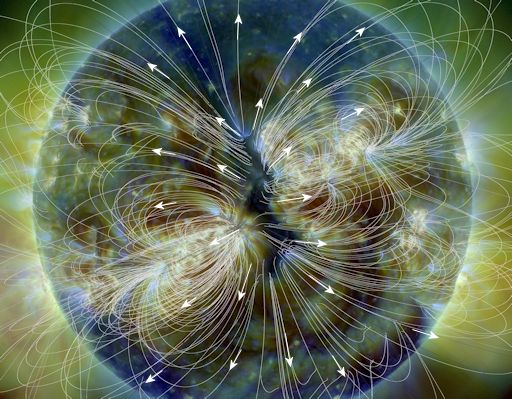 Astro Picture of the Day: May 14, 2014 Source: If you were floating above the Earth right now, this is what you might see. Two weeks ago, the robotic SpaceX Dragon capsule that delivered supplies to the Earth-orbiting International Space Station (ISS) also delivered High Definition Earth Viewing (HDEV) cameras that take and transmit live views of Earth. Pictured above, when working, is the live video feed that switches between four cameras, each pointed differently. Watch white clouds, tan land, and blue oceans drift by. The above video will appear black when it is nighttime on the Earth below, but the space station's rapid 90-minute orbit compresses this dark time into only 45 minutes. The present location of the ISS above the Earth can be found on the web. If the video appears gray, this indicates that the view is either being switched between cameras, or communications with the ISS is temporarily unavailable. As the HDEV project continues, video quality will be monitored to assess the effects of high energy radiation, which types of cameras work best, and which Earth views are the most popular. Although this feed will eventually be terminated, lessons learned will enable better cameras to be deployed to the ISS in the future, likely returning even more interesting live feeds.
__________________
1st in Kommisar's 2009 SM Tournament 1st in I Love You`s 2009 New Year`s Tournament 3rd in EnR's Mashfest '08 tournament 5th in Phynx's Unofficial FFR Tournament 9th in D3 of the 2008-2009 4th Official FFR Tournament 10th in D5 of the 2010 5th Official FFR Tournament 10th in D6 of the 2011-2012 6th Official FFR Tournament FMO AAA Count: 71 FGO AAA Count: 10 Bluearrowll = The Canadian player who can not detect awkward patterns. If it's awkward for most people, it's normal for Terry. If the file is difficult but super straight forward, he has issues. If he's AAAing a FGO but then heard that his favorite Hockey team was losing by a point, Hockey > FFR PS: Cool AAA's Terry - I Love You An Alarm Clock's Haiku beep beep beep beep beep beep beep beep beep beep beep beep beep beep beep beep beep - ieatyourlvllol |
|
|

|
|
|
#937 |
|
⊙▃⊙
|
Is anyone else experiencing performance issues on the main page of this thread? It seems to be getting progressively slower for me each passing day, and will probably have to make some changes.
Also, tomorrow is the beginning of my annual Victoria Day Weekend camping trip - the target this year is Killarney Provincial Park. Weather looks good so I'll be up many nights as well as the day doing some astrophotography. The trip spans from Friday until Monday night. This picture from the internet will be a common sight that I see during the day:  Daily Suspicious0bserver's Weather Post: May 15, 2014 What's in the sky tonight? May 15, 2014 -Jupiter's moon Io crosses the face of the planet from 9:41 to 11:57 p.m. Eastern Daylight Time. Io's tiny but more visible shadow follows it across from 10:42 p.m. to 12:59 a.m. EDT. -Last night, May 14th, a Japanese spy satellite passed over Brazil. Leonardo Caldas of Brasilia saw it backlit by the full Moon. Click to view the split-second transit: "Looking at Calsky, I noticed a possible transit of a satellite called IGS 7A," says Caldas. "I set my Canon SX50 HS digital camera to film at the predicted time--and there it was!" The dark silhouette of the satellite zipped across the Moon in only 0.48 seconds. "IGS 7A is a Japanese reconnaissance satellite, launched from Tanegashima on Dec. 12, 2011," explains Caldas. "It is a member of Japan's Information Gathering Satellite (IGS) system whose primary mission is to provide early warning of impending hostile launches." According to folklore, this month's full Moon is the "Flower Moon," named after the abundant flowers of northern spring.  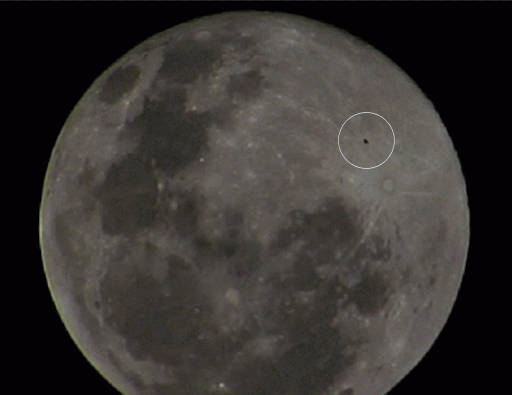 Astro Picture of the Day: May 15, 2014  Cruising through the outer solar system, the Voyager 2 spacecraft made its closest approach to Neptune on August 25, 1989, the only spacecraft to visit the most distant gas giant. Based on the images recorded during its close encounter and in the following days, this inspired composited scene covers the dim outer planet, largest moon Triton, and faint system of rings. From just beyond Neptune's orbit, the interplanetary perspective looks back toward the Sun, capturing the planet and Triton as thin sunlit crescents. Cirrus clouds and a dark band circle Neptune's south polar region, with a cloudy vortex above the pole itself. Parts of the very faint ring system along with the three bright ring arcs were first imaged by Voyager during the fly-by, though the faintest segments are modeled in this composited picture. Spanning 7.5 degrees, the background starfield is composed from sky survey data centered on the constellation Camelopardalis, corresponding to the outbound Voyager's view of the magnificent Neptunian system.
__________________
1st in Kommisar's 2009 SM Tournament 1st in I Love You`s 2009 New Year`s Tournament 3rd in EnR's Mashfest '08 tournament 5th in Phynx's Unofficial FFR Tournament 9th in D3 of the 2008-2009 4th Official FFR Tournament 10th in D5 of the 2010 5th Official FFR Tournament 10th in D6 of the 2011-2012 6th Official FFR Tournament FMO AAA Count: 71 FGO AAA Count: 10 Bluearrowll = The Canadian player who can not detect awkward patterns. If it's awkward for most people, it's normal for Terry. If the file is difficult but super straight forward, he has issues. If he's AAAing a FGO but then heard that his favorite Hockey team was losing by a point, Hockey > FFR PS: Cool AAA's Terry - I Love You An Alarm Clock's Haiku beep beep beep beep beep beep beep beep beep beep beep beep beep beep beep beep beep - ieatyourlvllol |
|
|

|
|
|
#938 |
|
⊙▃⊙
|
Heading off to Killarney now - will be back monday night or tuesday morning.
Daily Suspicious0bserver's Weather Post: May 16, 2014 What's in the sky tonight? May 16, 2014 -A new study published in the May 15th edition of Environmental Research Letters finds that lightning rates over Europe are modulated by the solar wind. The results contradict some previous studies, and the physical mechanism linking lightning and solar wind is uncertain. Nevertheless, the research appears credible and worthy of follow-up with global studies beyond Europe. Report: http://iopscience.iop.org/1748-9326/9/5/055004/article -Look for Mercury as twilight darkens. It's low in the west-northwest, far to the lower right of Jupiter and lower left of Capella. Mercury is having its highest showing of 2014 (for skywatchers at mid-northern latitudes). Astro Picture of the Day: May 16, 2014 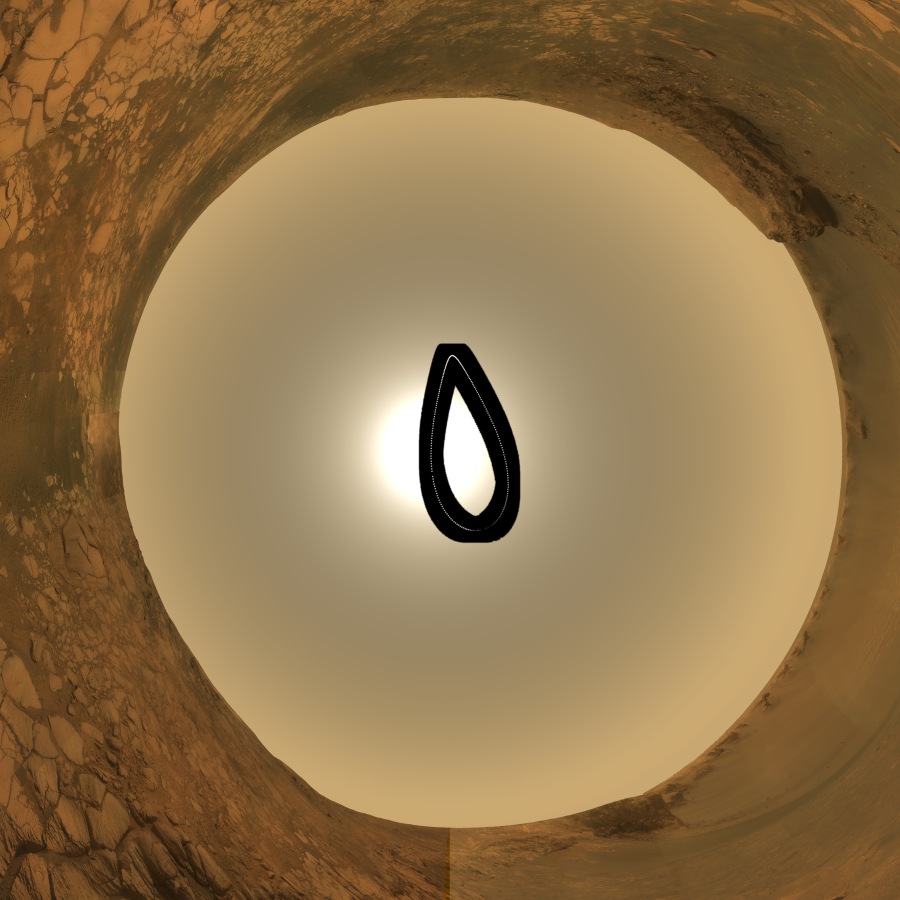 Staring up into the martian sky, the Opportunity rover captured an image at 11:02 AM local mean time nearly every 3rd sol, or martian day, for 1 martian year. Of course, the result is this martian analemma, a curve tracing the Sun's motion through the sky in the course of a year (668 sols) on the Red Planet. Spanning Earth dates from July, 16, 2006 to June 2, 2008 the images are shown composited in this zenith-centered, fisheye projection. North is at the top surrounded by a panoramic sky and landscape made in late 2007 from inside Victoria crater. The tinted martian sky is blacked out around the analemma images to clearly show the Sun's positions. Unlike Earth's figure-8-shaped analemma, Mars' analemma is pear-shaped, because of its similar axial tilt but more elliptical orbit. When Mars is farther from the Sun, the Sun progresses slowly in the martian sky creating the pointy top of the curve. When close to the Sun and moving quickly, the apparent solar motion is stretched into the rounded bottom. For several sols some of the frames are missing due to rover operations and dust storms.
__________________
1st in Kommisar's 2009 SM Tournament 1st in I Love You`s 2009 New Year`s Tournament 3rd in EnR's Mashfest '08 tournament 5th in Phynx's Unofficial FFR Tournament 9th in D3 of the 2008-2009 4th Official FFR Tournament 10th in D5 of the 2010 5th Official FFR Tournament 10th in D6 of the 2011-2012 6th Official FFR Tournament FMO AAA Count: 71 FGO AAA Count: 10 Bluearrowll = The Canadian player who can not detect awkward patterns. If it's awkward for most people, it's normal for Terry. If the file is difficult but super straight forward, he has issues. If he's AAAing a FGO but then heard that his favorite Hockey team was losing by a point, Hockey > FFR PS: Cool AAA's Terry - I Love You An Alarm Clock's Haiku beep beep beep beep beep beep beep beep beep beep beep beep beep beep beep beep beep - ieatyourlvllol |
|
|

|
|
|
#939 |
|
⊙▃⊙
|
Previous days will be updated later, still exhausted from the weekend trip. Inside the spoiler is some photos of things I saw.
Daily Suspicious0bserver's Weather Post: May 20, 2014 What's in the sky tonight? May 20, 2014 -As the stars come out, Saturn in the southeast, Vega in the northeast, Capella in the northwest, and Procyon in the west-southwest are all at about the same altitude (as seen from about 40° north latitude). On May 24th, the heavens could put on a display of irony. Forecasters say Earth will cross a stream of debris from Comet 209P/LINEAR, and the encounter could trigger a bright new meteor shower. The ironic thing is, the comet is so faint. Aaron Kingery of NASA's Meteoroid Environment Office took the picture on May 18th using a 0.5 meter telescope at the Marshall Space Flight Center. "209P is not a very photogenic comet," says Kingery. "This is the best I could do with a 60-second exposure." How could such a dim comet produce a bright meteor shower? In 2014, 209P is producing very little dust. However, the debris Earth is about to encounter didn't come from 2014. It was shed by the comet mainly in the 19th and 20th centuries. In those days, forecasters hope, the comet was more active. We will find out this weekend. If a magnificent meteor shower erupts on Saturday morning, it will be safe to say that the comet wasn't always so underwhelming.  Astro Picture of the Day: May 20, 2014  M61 is a barred spiral galaxy located in the nearby Virgo Cluster of Galaxies. Visible in M61 are a host of features common to spiral galaxies: bright spiral arms, a central bar, dust lanes, and bright knots of stars. M61, also known as NGC 4303, in similar to our own Milky Way Galaxy. M61 was discovered by telescope in 1779 twice on the same day, but one observer initially mistook the galaxy for a comet. Light from M61 takes about 55 million years to reach us. The above image of the central regions of M61 was taken with the Hubble Space Telescope and adapted for release as part of the Hubble's Hidden Treasures image processing competition.
__________________
1st in Kommisar's 2009 SM Tournament 1st in I Love You`s 2009 New Year`s Tournament 3rd in EnR's Mashfest '08 tournament 5th in Phynx's Unofficial FFR Tournament 9th in D3 of the 2008-2009 4th Official FFR Tournament 10th in D5 of the 2010 5th Official FFR Tournament 10th in D6 of the 2011-2012 6th Official FFR Tournament FMO AAA Count: 71 FGO AAA Count: 10 Bluearrowll = The Canadian player who can not detect awkward patterns. If it's awkward for most people, it's normal for Terry. If the file is difficult but super straight forward, he has issues. If he's AAAing a FGO but then heard that his favorite Hockey team was losing by a point, Hockey > FFR PS: Cool AAA's Terry - I Love You An Alarm Clock's Haiku beep beep beep beep beep beep beep beep beep beep beep beep beep beep beep beep beep - ieatyourlvllol |
|
|

|
|
|
#940 |
|
FFR Wiki Admin
Wiki Administrator
|
Not usually slow, but there is a lot on the first post.
__________________
|
|
|

|
 |
| Currently Active Users Viewing This Thread: 1 (0 members and 1 guests) | |
|
|